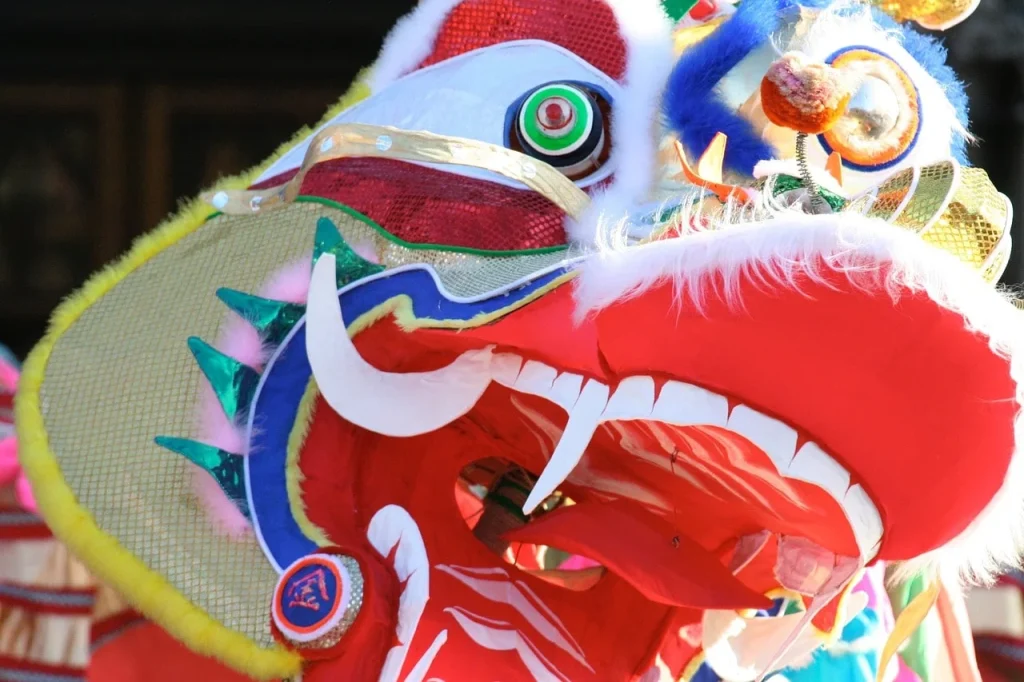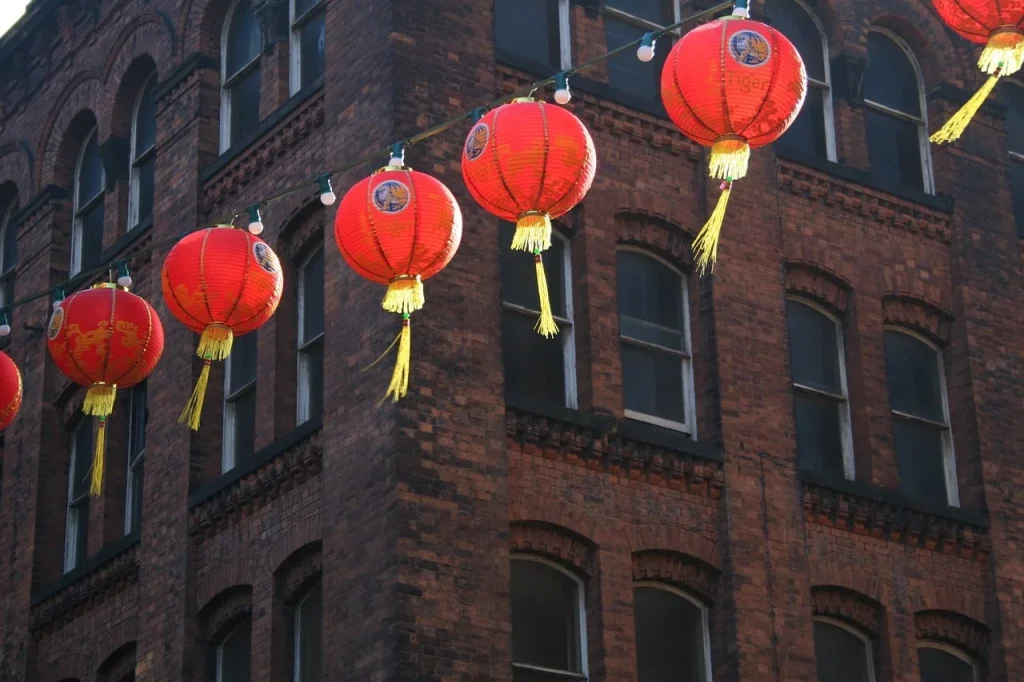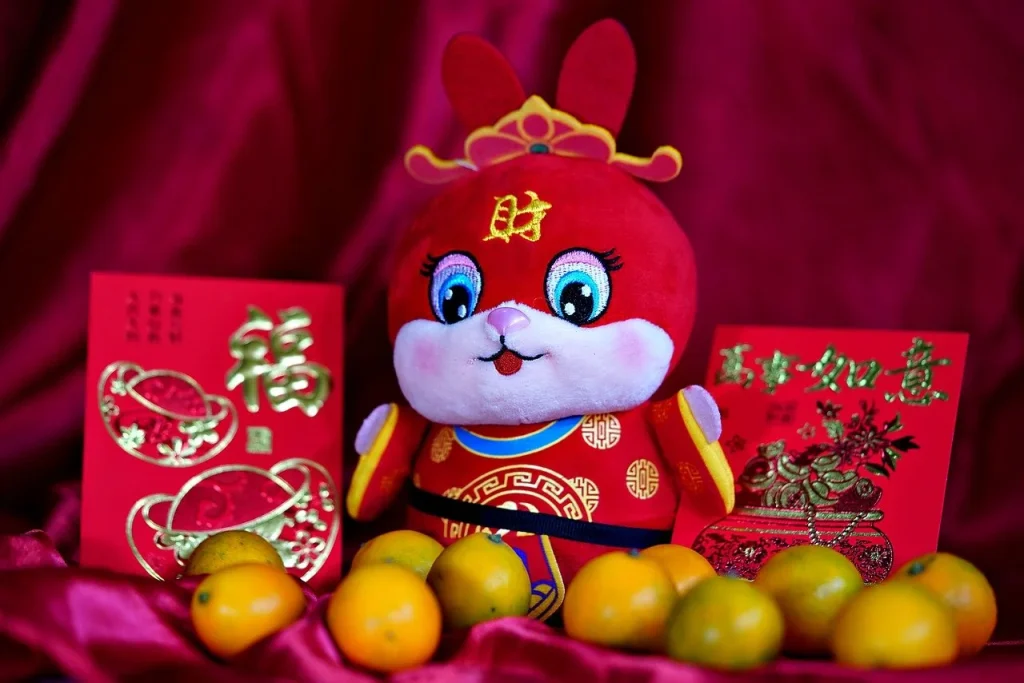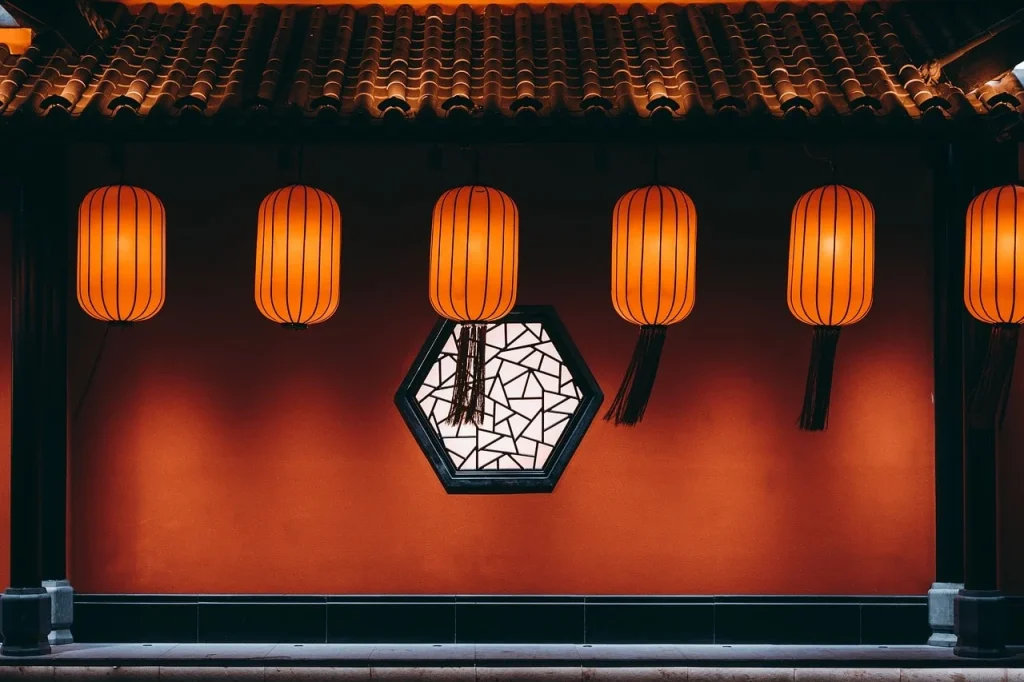Do you know why red is the color of choice for the Chinese New Year? Or why do families gather to enjoy a reunion dinner?
Chinese New Year, or Spring Festival, is filled with deep-rooted customs and joyful celebrations that aim to sweep away the old and welcome the new. This article will discover some fun facts about how this ancient festival is celebrated, its mythological origins, and the ways it brings people together, no matter where they are in the world.
Wishing you abundance and prosperity in the new year.
Confucius
Chinese New Year Facts
Welcome to our exploration of the Chinese New Year! Every detail in this article counts if you’re aiming to conquer the quiz at the end. Brush up on your facts to prove your expertise on this festive celebration.
- The color red, symbolizing luck and joy, dominates the festivities and is believed to ward off evil spirits and misfortune.
- The holiday’s travel rush, called Chunyun, is the largest annual human migration in the world.
- Each year is associated with one of the 12 animals in the Chinese zodiac, which cycle through a 12-year period.
- Nian Gao, a sweet sticky rice cake, is popular during the festival, symbolizing a higher income or a higher position.
- Families often clean their homes thoroughly to sweep away ill fortune and make way for incoming good luck.
- Children receive “lucky money” in red envelopes, which is thought to protect them from evil spirits.
- Fireworks are a huge part of the celebration, originally used to scare away the mythical beast Nian.
- The Lantern Festival marks the end of the New Year festivities with beautiful lantern displays and often a dragon dance.
- Mythology states that the Jade Emperor called a race of animals on his birthday to create the zodiac cycle.
- It’s common to wear new clothes from head to toe to symbolize a new beginning and fresh hope.
- Dumplings shaped like ancient Chinese money are eaten to bring wealth in the coming year.
- Some people abstain from eating meat on the first day, a practice intended to ensure long and healthy lives.
- The greeting “Gong xi fa cai” in Mandarin or “Gong hey fat choy” in Cantonese means “Wish you great wealth.”

- Flowers play a significant part, where orchids symbolize fertility and bamboo signifies longevity.
- The festival’s date varies each year as it aligns with the lunar-solar Chinese calendar, usually between January 21 and February 20.
- Traditional beliefs state that the entire house should not be swept on the first day lest good luck is swept away.
- Taboos include avoiding the use of sharp objects like knives to prevent cutting off fortune.
- The color white is often avoided as it traditionally symbolizes death and mourning in Chinese culture.
- Some families create a “tray of togetherness,” a circular tray filled with treats symbolizing a sweet life and unity.
- The God of Wealth is honored, with hopes that he will grant economic prosperity in the year ahead.
- On New Year’s Eve, families often stay up late playing games or watching TV programs dedicated to the celebration, known as Chunwan.
- The number of dishes served during the feast is usually even, particularly eight or ten, as these numbers signify prosperity.
- Unmarried adults often find the holiday challenging as they face pressures from relatives to marry and provide grandchildren.
- In northern China, people traditionally eat dumplings at midnight for their resemblance to ancient money, implying wealth.
- In southern China, a sticky sweet glutinous rice ball called Tangyuan is popular, symbolizing family togetherness.
- The holiday’s origins date back thousands of years, linked to the Shang Dynasty’s rituals to honor gods and ancestors.
- The fifth day of the New Year is when many people eat congee with mustard greens to cleanse the body.
- Businesses traditionally halt on this day, taking time off to relax and rejuvenate for the upcoming year.

- Windows and doors are often decorated with red paper-cuts with themes of happiness and wealth.
- The second day is known as the birthday of all dogs, and pets and strays are fed well on this day.
- Days before the New Year, markets are often filled with people buying goods for the feast, decorations, and new clothes.
- In mythology, wearing red underwear every day of your zodiac year is advised to ward off bad luck.
- Incense is burned at home and in temples as a tribute to ancestors and gods for blessing and protection.
- Setting off firecrackers at midnight is customary to scare away bad spirits and old energy from the past year.
- The tradition of Shou Sui, where family members stay awake together during New Year’s Eve, strengthens familial bonds.
- Zodiac compatibility predicts relationship success and personal fortune for the year.
- Many workers receive a month’s worth of pay as a bonus before the New Year, a boost to the holiday economy.
- Red banners with New Year couplets are displayed for good fortune and to share hopes for a prosperous year.

- The seventh day, known as Renri (the common man’s birthday), is the day when everyone grows one year older.
- Garlic and porridge are avoided as they are believed to bring bad luck during the festival.
- The holiday is also a time to settle debts and reconcile with others, a clearing of the old to welcome the new.
- Traditional gifts include fruits such as oranges and tangerines, often presented with both hands for respect.
- Certain words are avoided, like “death” or “sickness,” to prevent jinxing oneself or others.
- The reunion dinner, known as Nian Ye Fan, is among the most important meals of the year.
- Fish is served last and typically remains unfinished to symbolize abundance and the hope that prosperity will overflow.
- The practice of hanging a mirror in front of the door is believed to reflect evil spirits, preventing them from entering.
- A popular legend is that the holiday began with a mythical beast called Nian, which could be scared away by loud noises and brightness.
- Some people prefer to give commands in the form of suggestions during the festival to avoid sounding too harsh and risking bad luck.
- The East Gate of the Imperial Palace in Beijing is opened only once a year during this holiday for ceremonial purposes.
- The use of the word four is avoided during conversations and gift giving as it sounds like the word for “death” in Chinese, considered extremely inauspicious.
Chinese New Year Myths

Now that we’re familiar with the facts, it’s important to address some myths. Let’s set the record straight.
- Cleaning the House During Chinese New Year Brings Bad Luck
It is commonly believed that cleaning during the festival sweeps away good luck. However, the house is thoroughly cleaned before the New Year to remove bad luck, and brooms are then put away to avoid sweeping away incoming good fortune. - Wearing White or Black is Acceptable During Celebrations
Traditionally, white and black are colors associated with mourning and are avoided during Chinese New Year festivities. Bright colors, especially red, are preferred because they are considered to bring good luck and happiness. - You Can Cry Anytime During the New Year
Crying during the New Year is believed to set a sad tone for the year ahead. Families are particularly careful to keep children happy and not crying, as it is thought to ward off bad luck. - All Businesses Stay Open as It’s a Prosperous Time
Contrary to the belief that the bustling season keeps all shops open, most businesses are closed during the early days of Chinese New Year to allow everyone to spend time with family and to honor the holiday. - The Lantern Festival is Part of Christmas Celebrations
It is often mistakenly thought that the Lantern Festival is a Christmas event due to its proximity to the holiday season. In reality, it marks the end of Chinese New Year celebrations, occurring on the fifteenth day of the first lunar month.
No products found.
Chinese New Year Quotes

Let’s continue our journey into the heart of the holiday through the words of those who celebrate it.
Hope the rising sun will bring with it bundles of joy, happiness, and luck.
Li Bai
Li Bai, one of the greatest poets in Chinese history, captures the essence of new beginnings and blessings associated with the sunrise of the new year.
May the new year be filled with brightness and hope so that darkness and sadness stay away from you.
Sun Yat-sen
Sun Yat-sen, the founding father of the Republic of China, often shared messages of hope and renewal during festive times.
A new year is a fresh turn around the wheel of time.
Laozi
Laozi, an ancient Chinese philosopher, offers a reflective perspective on the cyclical nature of time and the renewal each new year brings.
Celebrate endings—for they precede new beginnings.
Jonathan Lockwood Huie
Jonathan Lockwood Huie, though not Chinese but an inspirational author, captures a universal theme that resonates deeply during the Chinese New Year celebrations.
Just as you usher in lights, lanterns and other forms of illuminations to welcome the New Year, may the New Year usher in for you new hopes, dreams and aspirations.
Zhou Enlai
Zhou Enlai, a prominent Chinese leader, highlights the symbolism of light and hope that accompanies the celebration of the Chinese New Year.
Chinese New Year FAQ

Having explored the quotes, we now approach the FAQ section. Ensure you understand these questions well, as they will prepare you for the quiz.
- How is Chinese New Year celebrated?
It is celebrated with fireworks, dragon and lion dances, family reunions, and special meals. People also clean their homes to sweep away bad fortune and make way for incoming good luck. - What are the traditional foods eaten during Chinese New Year?
Traditional foods include dumplings, which symbolize wealth due to their shape resembling ancient Chinese money, and fish, which represents surplus and prosperity. Sweet rice cakes, or nian gao, are also popular for symbolizing a higher year. - Why is red the dominant color during Chinese New Year?
Red is considered a lucky color in Chinese culture, believed to ward off evil spirits and bad fortune. During Chinese New Year, people wear red clothes, decorate their homes with red, and give gifts in red envelopes to bring good luck and happiness. - What is the significance of giving red envelopes?
Red envelopes, or hongbao, contain money and are given to children and unmarried adults. They symbolize good luck and are supposed to help ward off evil spirits. - Can anyone celebrate Chinese New Year, or is it specific to Chinese culture?
It is rooted in Chinese culture, but it’s celebrated globally in areas with large Chinese populations and by others who enjoy the cultural practices. It’s a festive time that welcomes everyone to partake in the joyous and colorful traditions.
No products found.
Chinese New Year Trivia

Welcome to our Chinese New Year quiz! Test your knowledge or risk having to wear a dragon costume to the next New Year’s Eve party!
Conclusion
Reflecting on the colorful and profound traditions of Chinese New Year, it’s clear why this festival holds such a dear place in the hearts of millions.
From the bustling streets filled with lanterns to the cozy reunions of family members who might only see each other once a year, each element weaves a rich tapestry of joy and hope.
Let’s carry the spirit of generosity, renewal, and joy throughout the year and look forward to the next Chinese New Year with even more enthusiasm. Till next time, stay curious and explore more. Cheers.
6 Sources Used For This ArticleChinese New Year 2024: Traditions – China Highlights
Fun Facts on the Chinese Lunar New Year – China Travel
Chinese New Year – Fandom
Things You Didn’t Know About Chinese New Year – Chinese New Year
Lunar New Year / Spring Festival – Vermont Chinese School


